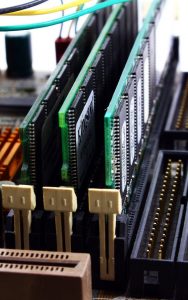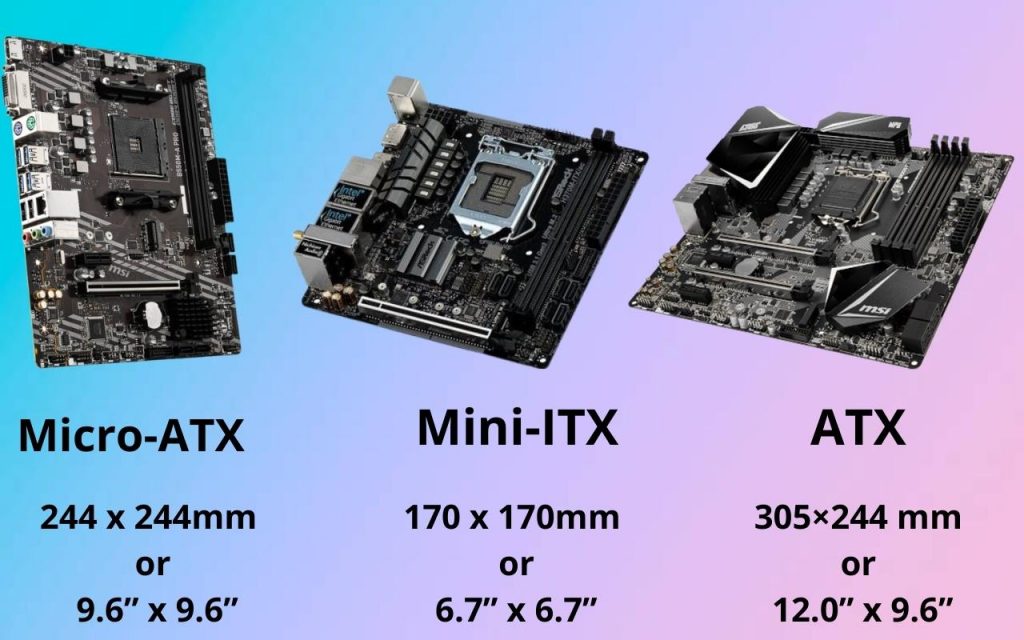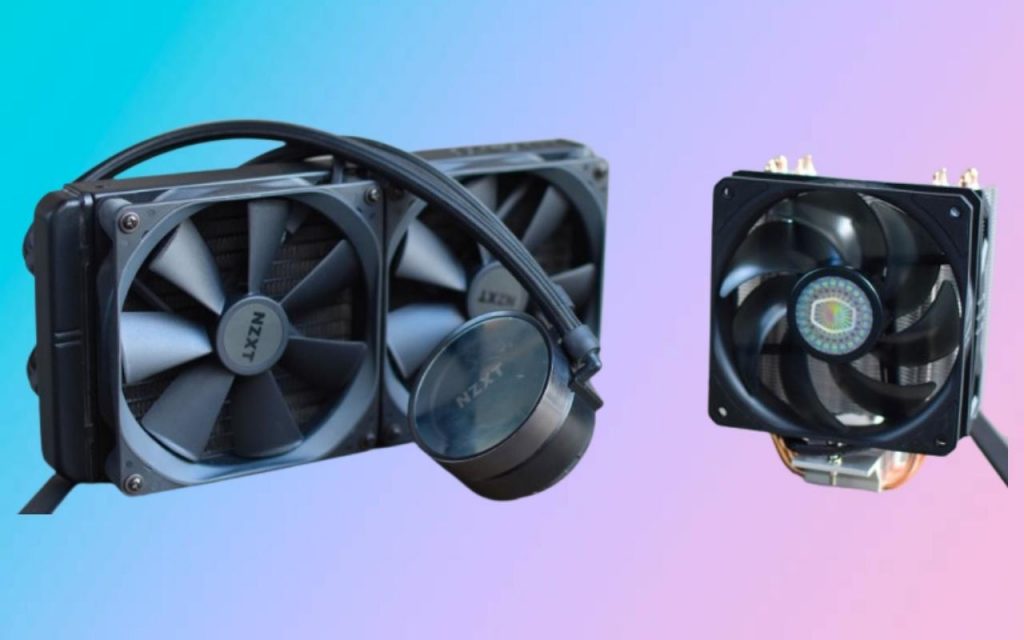I miss the days where picking up the right memory for your computer was one of the easiest tasks and all the memory kits used to look like the same. Things have changed a lot ever since we have left that era and honestly, it has become frustrating for a lot of people.
You see, we are no longer living in an era where all the memory sticks were basically green PCB with circuits and transistors on top of them. The RAM kits that are available nowadays are a lot different and well… better, as well. However, the overall betterment does lead to a lot of confusion for the average consumer and keeping that in mind, we are going to help you out.
If you are stuck in the rut about how to choose a RAM, this guide is for you as we are going to break down every aspect of getting your hands on a good RAM kit so you can finally rest easy and complete your purchase. With the right guidance, the entire process is a breeze to go through.
Table of Contents
Understanding the Physical Form Factor

This is one thing that most people are not even properly aware of but the RAMs that you are going to find in the regular desktop computers are a lot different from the ones that you find in the laptops. Yes, that actually stands true. RAM modules are also called DIMM, which stands for “dual in-line memory module,” and as it stands, the market has a number of DIMM variations available in the market and we are going to explore them.
- UDIMM: When you are looking at different RAM modules available in the market, the UDIMM is the most common ones that you are going to find. The U here stands for Unbuffered or Unregistered memory. This type is normally so common that most manufacturers do not even bother listing the full name and just go with DIMM.
- SO-DIMM: The second memory type that is also a lot more common than one might think is called SO-DIMM. This is the memory type that you are going to get your hands on if you are looking for memory that is specifically for laptops. Now, it is important remember that SO-DIMM RAM can also be unbuffered. As for what the SO stands, this stands for “small outline” and yes, as you may have expected, this memory type is smaller than DIMM.
- MicroDIMM: This is the type of DIMM that is a lot like SO-DIMM or the one mentioned above but as the name suggests, you are looking at something that is even smaller. Now, it is important to also know that this type of memory is not as common and therefore, it is only used in specific use cases or computer devices that require that small of a memory module.
These are all the physical form factors of the RAM but wait, there’s more. A lot more, to be honest. Let’s uncover more.
What Even is DDR?

Now you are away from trying to understand some physical differences that are common in RAMs, we are finally shifting our focus towards something else. Modern RAMs are available with various numbered DDR identifiers. While it is easy to remember what the latest numbered DDR is, for a lot of people, it is often difficult to figure out what it actually means.
In RAM, DDR stands for Double Data Rate and the appended number like DDR3 or DDR4 indicates the generation of the double data rate standard. However, this is not all. You see, earlier RAM modules used to be referred just as DRAM which would mean Dynamic Random Access Memory and while most RAM kits available in the market are still effectively DRAM, the changes here are higher capacity, better circuit designs, and better speed.
First, the RAM manufacturers decided to introduced a clock signal interface in the DRAM so it can sync up with other parts of the system, and that is what made it SDRAM. However, moving forward, DDR was developed which effectively doubled the amount of data bandwidth that was available to the rest of the machines and users.
From there, we see the arrival of DDR2, DDR3, DDR4, and DDR5 being the latest. You must also remember that your motherboard and CPU will play a massive role in allowing you to choose the right DDR RAM.
How Much Capacity Do I Need?
The capacity of the RAM is one of the most important aspects that one must keep in mind. Thankfully, this is also the part that is easiest to understand. Simply put, having more RAM is always good and less RAM is not good. Additionally, RAM capacity is also one of the things that most people look for when they are buying a RAM.
To make it even simpler for you to understand, 8GB of RAM will generally deliver better performance than 4 gigs of RAM. However, if you are wondering how to choose RAM for a gaming PC, then things are a bit different as most modern games will require you to have at least 16 gigs of RAM in total so you can actually play games properly. Additionally, all software that you install on your computer will have their own requirements for the RAM needed.
There is more, however. I already clarified that more RAM is better but that does not mean that you can just head to your closest computer store and buy as much RAM as possible. For instance, if you are running a 32-bit operating system, you will be limited to just 4GB of memory, so it does not matter how much RAM you have, only 4 gigs of it will be utilized. Thankfully, most modern CPUs actually ship with 64-bit OS and that can theoretically support up to 4 petabytes of memory. Even though most modern computers usually top at 32 to 256GB of memory depending on the CPU and motherboard combination you have.
Does RAM Speed Matter?
This is where things start to get tricky all over again. The thing is, when you are wondering about the aspects that make a RAM fast or slow, there are two things that are always looked at – the frequency and the timing.

First, we are going to take a look at the frequency of the RAM which is a commonly referred to as the speed of the RAM. When you are looking at various listings for RAM, you might find the m listed as DDR4-3200 or DDR4-2666. The four digits that you normally see are the frequency of the RAM. The RAM is responsible for constantly doing reading/writing cycles with your loaded data and that frequency is referring to just how many times per second the memory is going to go through that cycle. So, a DDR4-3200 frequency cycle will translate to 3.2 billion read/write cycles per second. This means that higher frequency would result in better performance, right? Sadly, that is not the case. Most CPU and motherboard combinations fail to support the these higher frequencies properly, and the higher you go in terms of the frequency, the more you end up paying.
Then we are looking at the timing of the RAM, which is also known as Column Access Strobe latency or CAS latency. This is a measurement of the delay between the RAM modules getting a command from the CPU and the RAM actually executing the said command. CAS latency is usually listed as a series of number such as 12-22-22-42. Which actually refers to a series of timing values beyond just the latency itself. Typically, the timing order is CAS Latency – Row Address to Column Address Delay – Row Precharge Time – Row Active Time. If you are having trouble understanding, just know that the lower the numbers, the better. CAS Latency itself is a lot more complicated and requires a lot more discussion and research but simply put, lower timings are not going to make a massive impact on the performance.
Last but not the least, we have XMP, this is something that you can use to overclock your RAM automatically and without having to go through the tricky process of RAM overclocking and works really well in most cases. You can just enable the XMP profile from your motherboard’s UEFI setup and you are good to go.
What Are Channels in a RAM?
When you are looking at the RAM, you will often come across something that will be referred to as a channel. It is not as complicated but let’s look at it. RAM channels act as roads between the CPU and the RAM if you only have a single channel, it will take longer to process everything. So, if you are using a super high-end CPU coupled with a single channel RAM, you are looking at a lot of blocking and slowdowns on your computer as well.
Thankfully, most modern CPUs do come with support for dual channel memory and even quad channel memory and these are a lot more effective, of course. However, in order to fully utilize these channels you are going to need to use multiple RAM sticks, as well.
Therefore, having a dual or a quad channel RAM is always better than having a single channel RAM as the lower performance is just not worth it and buying two or four sticks of RAM together is much better
What Other Specs to Know About
Although one would believe that everything we have talked about is more than enough to educate oneself on RAM and various aspects of it, there is more.
- ECC: Error Checking and Correction is a RAM feature that inserts an additional step in the RAM module that lets it check and ensure that data that is being handled is correct and without any errors. This might seem rudimentary but it is an excellent solution that can be used to reduce data and memory errors. However, it does tend to slow things down. That is why most consumer-grade RAM kits ship without this feature but if you are working with computational workload, ECC memories are a lot more common in those scenarios.
- Registered and Unregistered: Next up we have registered and unregistered which is also known as buffered or unbuffered. Registered RAM is normally the one that is going to be found with ECC features and these features are normally more important that handle large amount of data. Registered RAM aids in carrying some of the load that would normally go to the memory controller with unregistered RAM and this also allows the motherboard to support a higher capacity of RAM.
- Voltage: Most of the modern computer users do not really have to worry much but voltage is the specification that allows you to measure the amount of power a RAM needs to function. For those who are into overclocking every component of their computer, this is an important feature.
- Heat Spreaders: RAM does tend to get hot and while the temperature does not rise to the same level of a CPU or a GPU, it still is enough to damage the PCB if it is extended. With that said, almost all the modern RAMs have beefy heat spreaders that are used to dissipate heat effectively.
- Height: This is not something that most people will have to be concerned with but if you are using an aftermarket CPU cooler, you might want to check the height clearance to ensure that taller RAM sticks do not cause support issues as it is known to be a common issue in the past.
Do I Want My RAM to Look Good?
This might not really concern a lot of people but it is evident that modern-day gamers are always looking to make sure that their computers look as good as possible and aesthetics play a huge part in this situation, too.
Considering how almost every component, including the power supplies are now available in RGB, you can go for RGB RAM kits as well. Additionally, you can even look at various styles of heat spreaders. This is perhaps one of the best time to buy RAM as you will have so many options that you clearly will not get tired.
Just pay attention to how important aesthetics and cohesion is for you and then take it from there.
Final Words
I understand that we are no longer living in the time where all RAM kits would look the same. Things have drastically changed and for the better. The RAM kits available in the market today are inherently different and varied but they all are still just as good or even better, to be honest.
If you are confused about how to choose a RAM, this guide explains everything there is about RAM that you must understand before you purchase it and we are hoping it would help you have a better buying experience.


